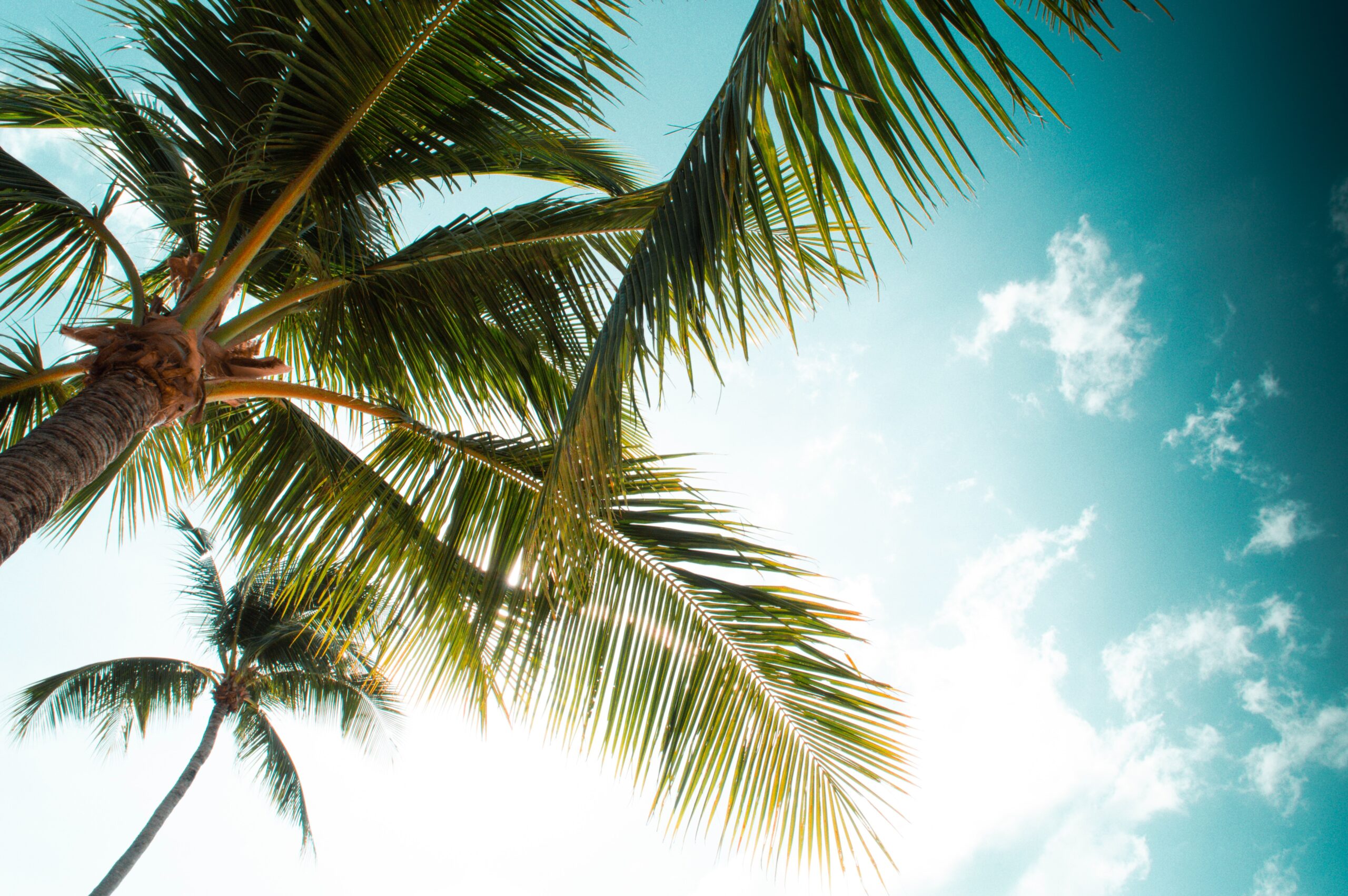Best & Worst Time to Visit Koh Samui
Are you planning a trip to Koh Samui, Thailand? Are you trying to find out what the worst time to visit Koh Samui is so that you can avoid it?
The best time to visit Koh Samui is from January through April, but visiting Koh Samui any time besides mid-September through December is fine!
The worst time to visit Koh Samui is from mid-September through December, considered monsoon season in Koh Samui, also known as the rainy season. During this time, you can expect a fair bit of rainfall, increased winds, and difficulty to enjoy Koh Samui for what it is!
Below, I’ve shared the worst time to visit Koh Samui by month and the best time to visit Koh Samui by month!
But before we get into that, it’s important to discuss where Koh Samui is located because the islands in the Gulf of Thailand have different weather patterns compared to other popular southern destinations in Thailand, like Phuket and Krabi!
Koh Samui is located in the Gulf of Thailand, off the eastern coast of the mainland. It is part of the Surat Thani Province, which is in the southern region of Thailand.
Other islands in the Gulf of Thailand are Koh Chang, Koh Phangan, Ko Tao, and others, which all share the same weather patterns as Koh Samui.
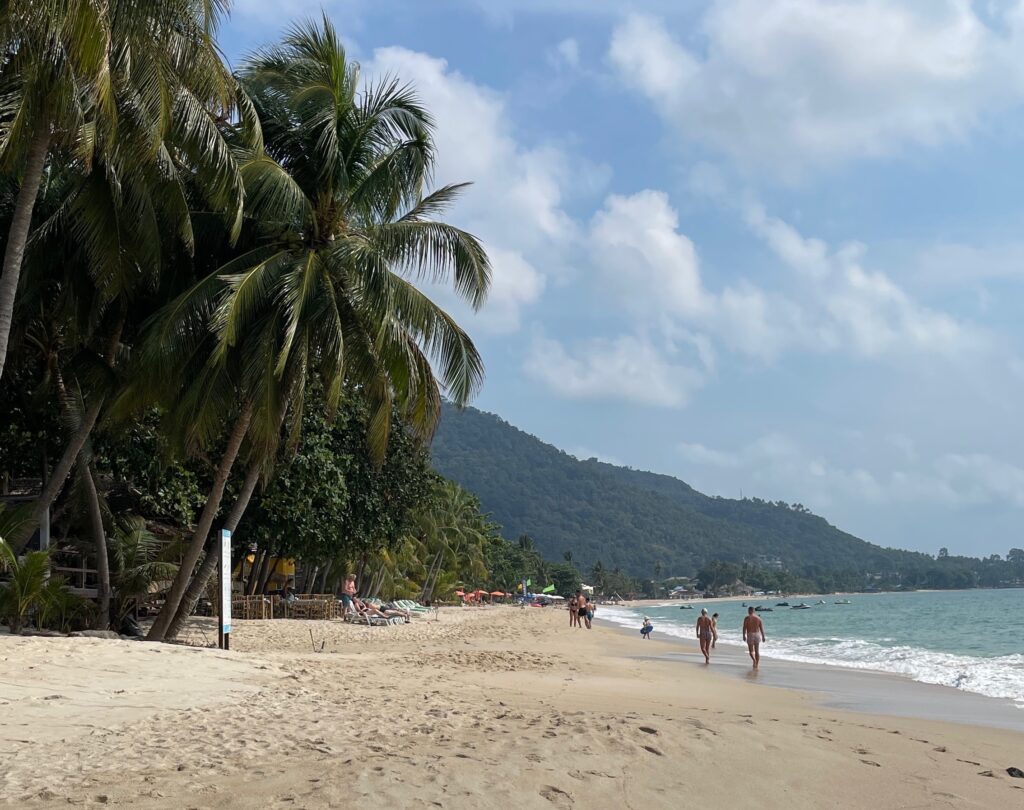
Best Time to Visit Koh Samui by Month
January — Sunny & Slightly Cool
January is the start of the dry season in Koh Samui, and it’s an excellent time to visit. Koh Samui enjoys dry and pleasant weather.
Average low temperatures are around 23°C (73°F), while highs reach approximately 29°C (84°F).
January is known for abundant sunshine and minimal rainfall, making it an ideal time for outdoor activities, sunbathing, island-hopping, and popular Koh Samui day tours!
February — Very Sunny
The best month to visit Koh Samui is February; Koh Samui experiences dry and pleasant weather this month.
Average low temperatures are around 24°C (75°F), with highs reaching approximately 30°C (86°F).
February offers ideal sunny days, minimal rainfall, and comfortable humidity levels. This makes it an excellent time to enjoy outdoor activities, beaches, and explore Koh Samui’s attractions in favorable conditions.
March — Very Sunny/Hot
Koh Samui sees warm and dry conditions in March, with slightly warmer temperatures than in February.
Average low temperatures hover around 25°C (77°F), while highs reach approximately 31°C (88°F).
The island experiences mostly sunny days with few rainfalls, making it a perfect month to visit Koh Samui and experience all it has to offer!
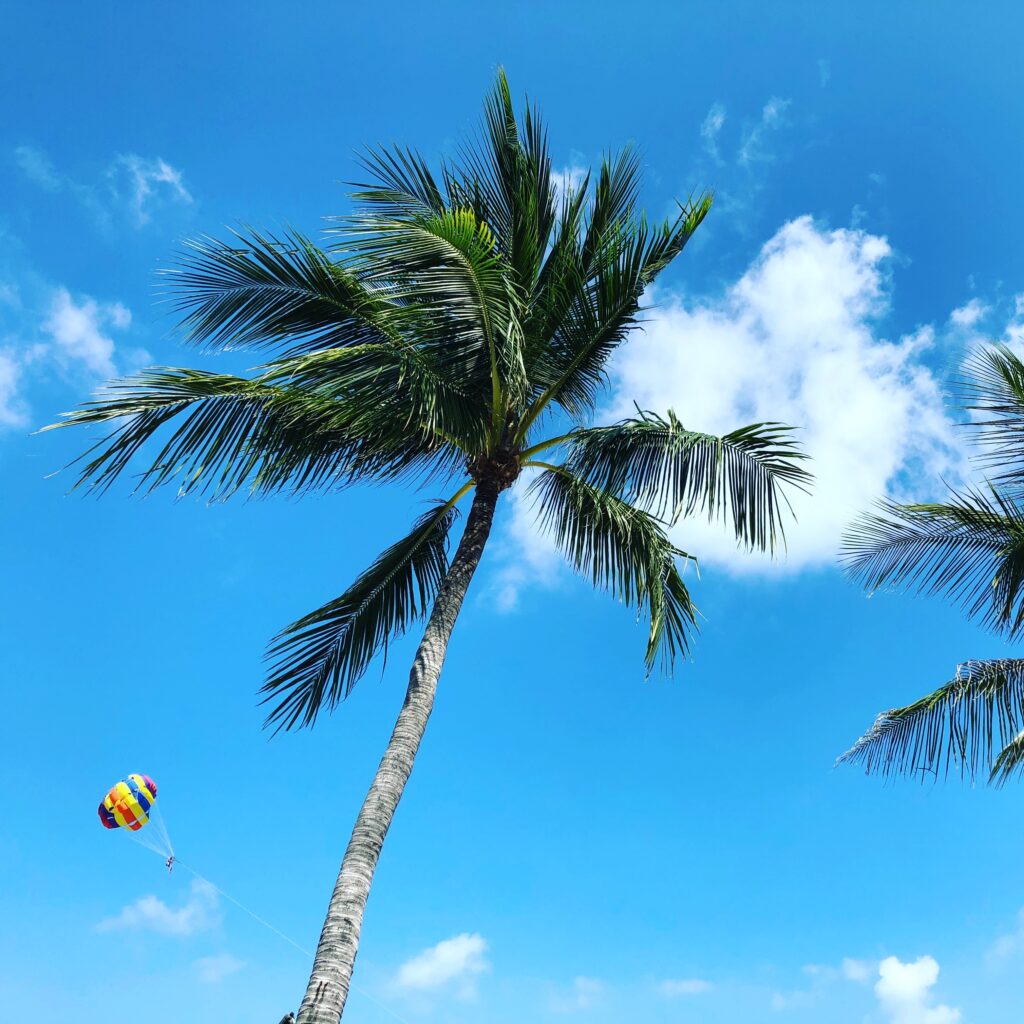
April — Hot
Visiting Koh Samui in April is an excellent time to visit, especially if you enjoy hotter temperatures. Average low temperatures in April are around 26°C (79°F), while highs reach approximately 32°C (90°F).
Koh Samui experiences plenty of sunshine and low rainfall, making it the best time to visit for beachgoers who enjoy the heat.
April is the peak of the dry season in Koh Samui. The famous Songkran Water Festival occurs this month and is also a fun experience for visitors.
May — Hot & Wet
In addition, May is also quite warm but has more rainfall compared to March and April.
During May, you can expect average low temperatures of 27°C (81°F) and average highs of 33°C (91°F).
May is a transitional weather month in Koh Samui, though the mix of rainfall here and there does reduce the humidity levels on the island. Those who enjoy the heat but prefer breaks throughout the day will enjoy visiting in May.
June — Hot & Less Rain
Visiting Koh Samui in June is a great idea. The weather is quite similar to May but with slightly less rain.
Temperatures hover as low as 26°C (79°F), while highs reach approximately 32°C (90°F).
A bonus is the island is less busy than in the upcoming months of July and August when many are visiting for the Summer holidays.
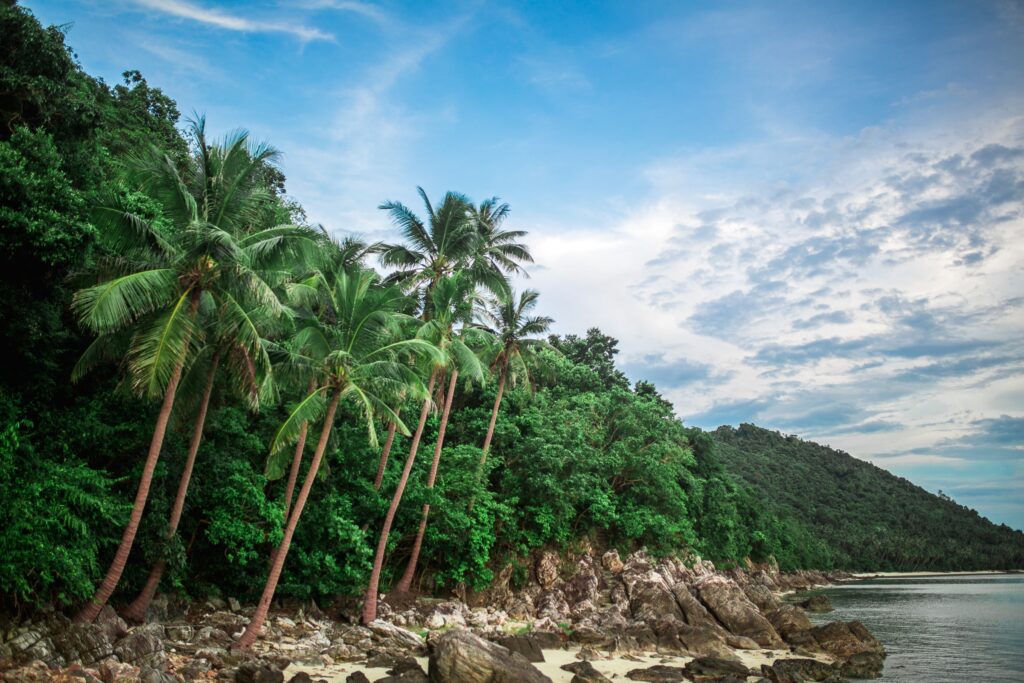
July — Sunny
Continuing the sunny weather from June, July is an ideal time to visit the island. Most days are sunny, and you’ll experience rainfall here and there, but nothing unusual.
Average low temperatures hover around 26°C (79°F), with highs reaching approximately 32°C (90°F).
During July, you’ll find several travelers from all over the world Summer vacationing in Koh Samui.
August — Sunny
In August, you can expect weather similar to that in July: sunny days with minimal rainfall, and any rainfall that does occur tends to pass by rather quickly.
Temperature-wise, August is identical to July, with lows around 26°C (79°F) and highs approximately 32°C (90°F).
The seas are calm, making it the perfect time to visit for those looking to experience many water activities and excursions in Koh Samui.
September — Sunny & Possible Rain
Rainy days increase slightly in September in Koh Samui compared to the summer months of July and August. While you can expect sunny days in September, it’s likely in July and August.
Expect temperatures as low as around 27°C (80°F), with highs of approximately 32°C (89°F).
As the end of September approaches, the weather transitions to October’s rainy atmosphere. So if you choose to visit during September, it’s best to visit during the first half of the month!
Worst Time to Visit Koh Samui by Month
October — Cloud/Rainy & Humid
In October, Koh Samui experiences the start of its rainy season with average low temperatures around 24°C (75°F) and highs around 30°C (86°F).
During this month, you can expect increased rainfall and occasional thunderstorms throughout the day. Humidity levels are high, contributing to tropical conditions.
Visiting during this time, expect wet weather but occasional sunny intervals. Outdoor activities will be impacted most days, and seas can be rougher this month.
November — Very Rainy & Humid
During November, Monsoonal rainfall reaches its highest point in Koh Samui with average low temperatures around 27°C (81°F) and highs around 32°C (90°F).
November, you can expect frequent heavy downpours and thunderstorms throughout the day and sometimes at night. Due to the rainy and windy conditions, you won’t be able to engage in water sports in November, as the sea is not safe to enter!
December — Cool & Less Rainy
December in Koh Samui is considered mostly a moderate month with occasional heavy rain showers but a chance of sunshine with average low temperatures around 25°C (78°F) and highs around 31°C (88°F).
Some days closer to the end of December are possible where sunbathing and enjoying the beach while lounging on a chair or hammock.
If you’d like to visit Koh Samui during December, it’s best to visit closer to the end of the month, near Christmas. After all, Koh Samui is a sought-after destination to celebrate Christmas.
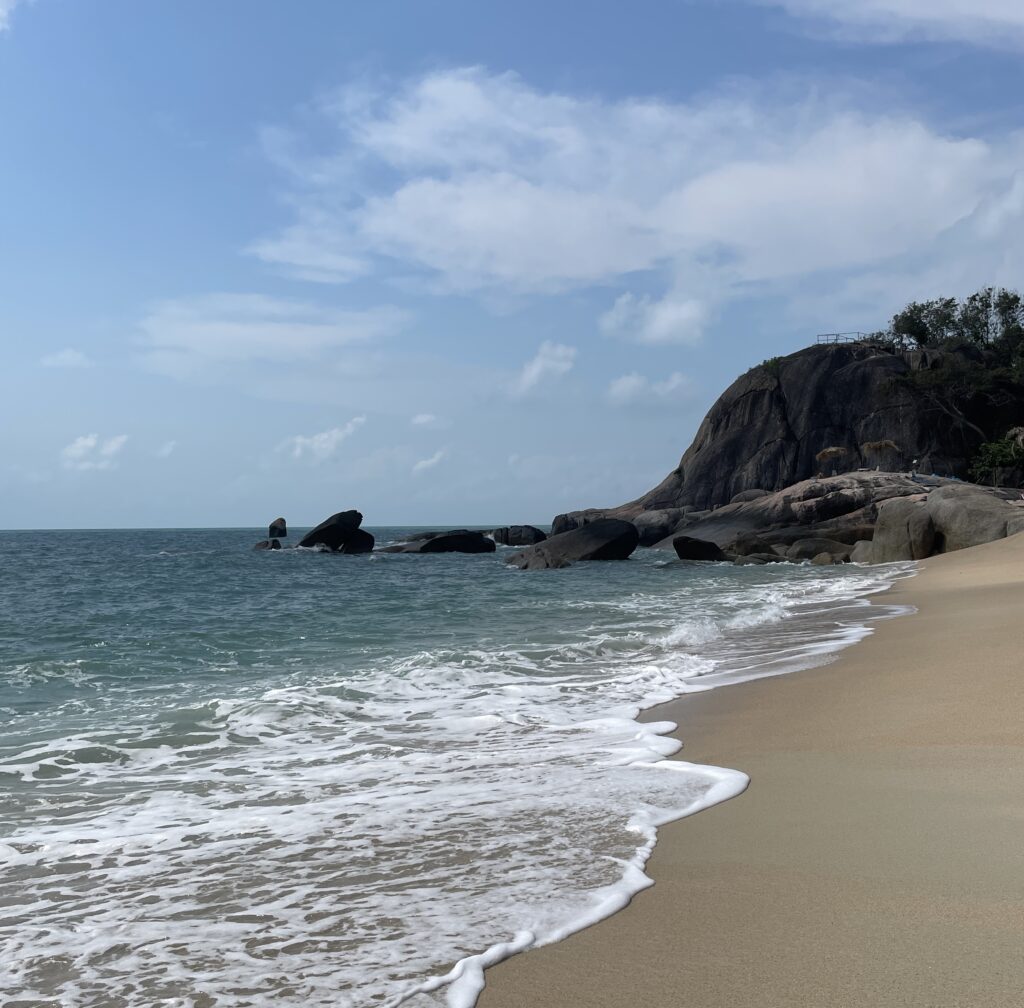
High Season in Koh Samui
The high season or some also refer to it as the peak season, is when a destination is expected to have its highest number of visitors due to ideal weather!
January through April are when Koh Samui’s high season is. You can expect the island’s hotels, restaurants, and beaches to get as busy as possible during this time.
Koh Samui has a second peak season from July through August for summer holidays, though temperatures aren’t as favorable as its best peak season of January through April.
Weather temperatures are ideal, making it the best few months to experience Koh Samui, so tourists like yourself should visit the island to take advantage of that!
While there will be crowds at the beach, night markets, and all, don’t worry. The crowds aren’t overbearing or anything. After all, there are many islands in Thailand for tourists to visit!
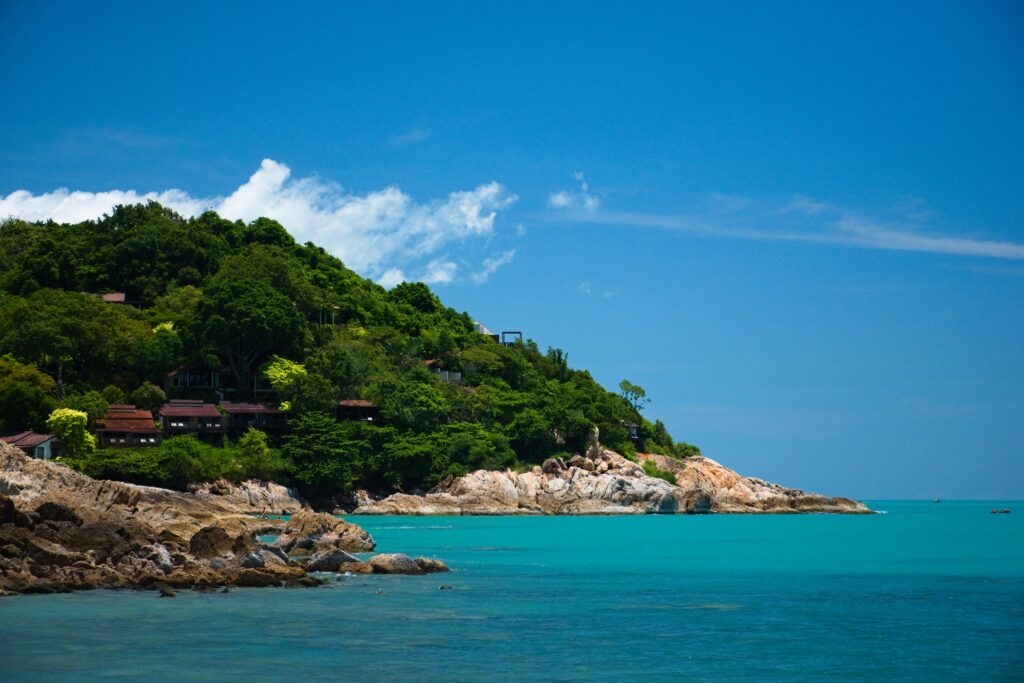
Shoulder Season in Koh Samui
Shoulder season is a travel period between a destination’s peak and off-peak seasons.
During shoulder season, you can expect slightly lower tourist numbers and more favorable prices on flights and hotels to Koh Samui than in peak season.
May through June is when Koh Samui’s shoulder season is. The weather is still optimal for experiencing the island, and crowds are far less than in peak season. The island gets slightly busier in July due to summer holiday travel.
Visiting Koh Samui during shoulder season is a great time for those who prefer a balance between good weather, affordability, and fewer tourists!
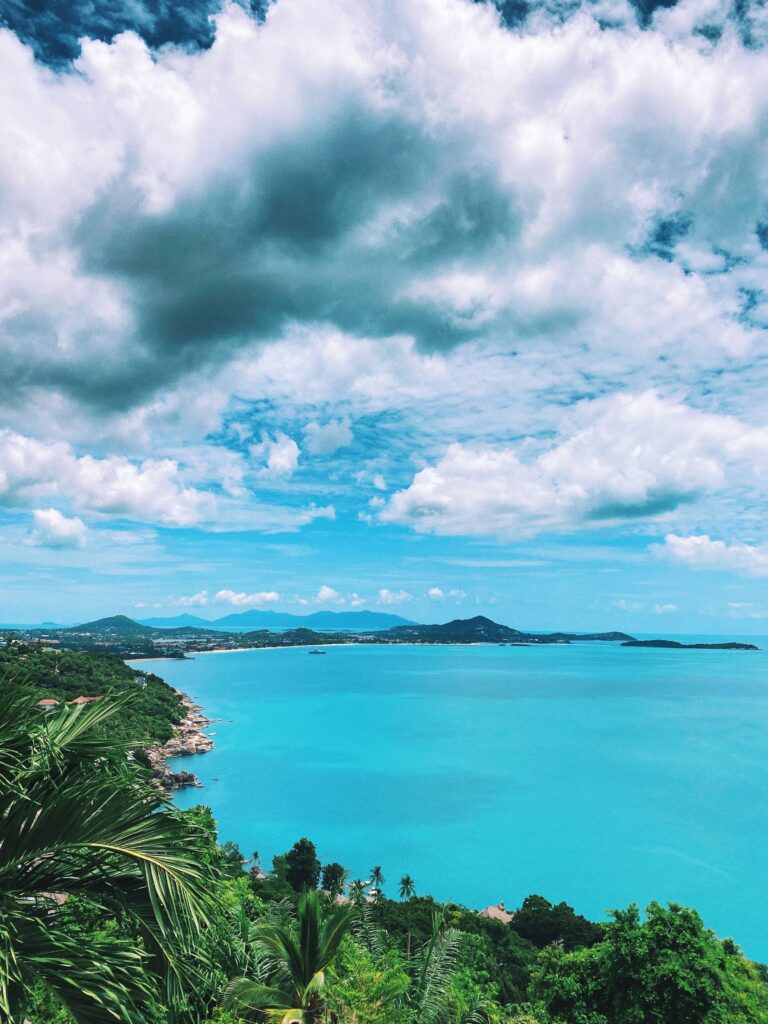
Off Season in Koh Samui
Visiting Koh Samui during the off season is rather risky if you’d like to experience the popular Thai island for all it has to offer!
From around mid-September through most of December, Koh Samui experiences its rainy season, also known by locals as the monsoon season.
During this time, the island sees its fewest tourists due to the unfavorable weather conditions.
The beginning of the rainy season can be difficult to predict, but if you choose to visit in September, it’s advised to visit during the first half of the month; the earlier, the better.
The rainy season ends around the end of December in Koh Samui. Again, if you choose to visit for the holidays in December, it’s advised to visit in the second half of the month.
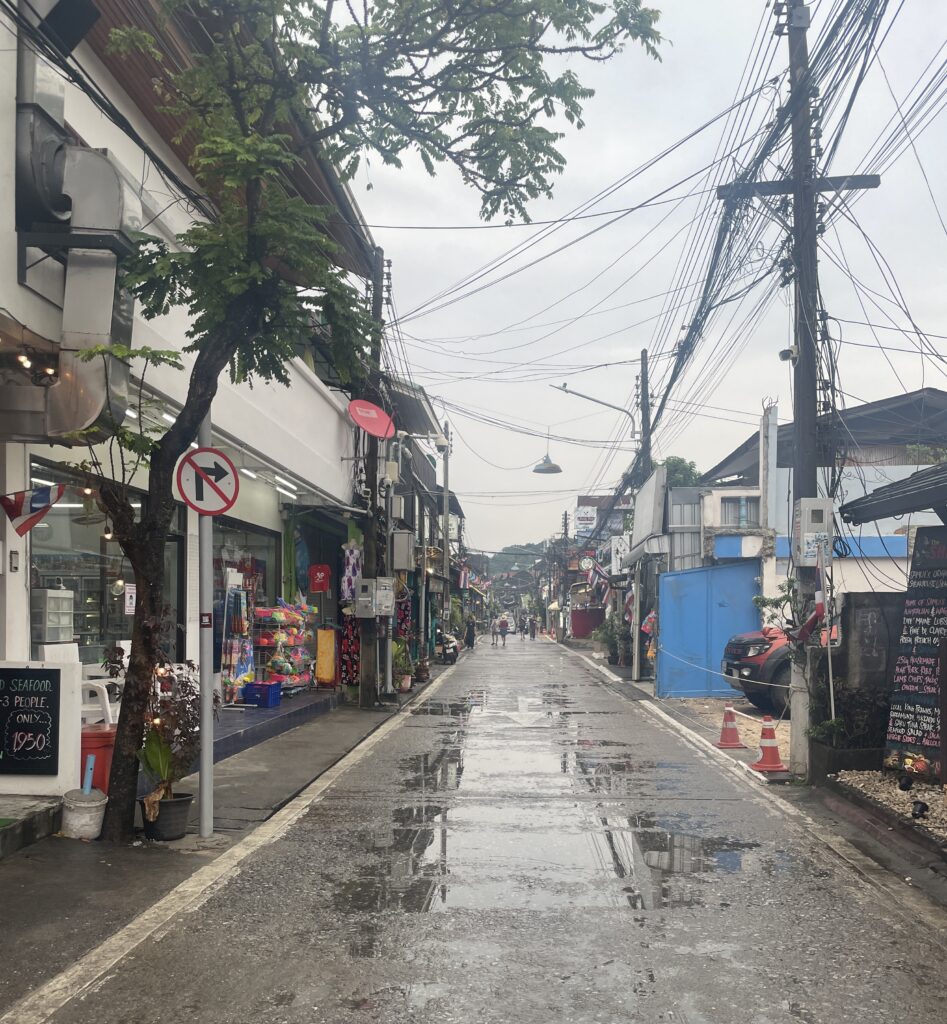
Where to Stay in Koh Samui
Chaweng Beach: This is the most popular area on Koh Samui. Countless bars, restaurants, shopping, hotels, and hostels are nearby. On the extensive long beach shoreline of Chaweng, you will find several restaurants and beach bars.
Kimpton Kitalay – 5 Star / Famous for its spacious rooms, many restaurants, a luxurious spa, and much more. The Kimpton Samui is in an excellent location on Koh Samui
Samui Resotel Resort – 4 Star / Cozy resort with spacious rooms and a stunning rooftop located along Chaweng Beach, near many restaurants and shops
Lub d Koh Samui – 3 Star / A perfect hotel for a younger crowd, located right on the popular Chaweng Beach, Lub D Samui is close to the central part of Koh Samui
Bo Phut Beach: Also, the area of the Fisherman’s Village, Bo Phut Beach is a calmer area full of couples and families visiting. It’s only 15 minutes from Chaweng Beach and Central Samui, the island’s main shopping mall.
Ibis Samui – 4 Star / Located right along Bo Phut Beach, the Ibis is an excellent location ideal for families, with a beautiful pool overlooking the sea
P&T Hostel / Those visiting on a budget, look no further. This is the cheapest and highest-ranked hostel on the island. They’ve got everything you need, even a restaurant in the hostel
Lamai Beach: A Calmer beach area with several restaurants, shops, and hotels nearby. The area is full of expats and, on average, has a more mature crowd.
Pavilion Samui Villas and Resort – 4 Star / Located centrally in Lamai Beach, this resort offers stunning modern villas for guests to enjoy by the beach
4U Resort Samui – 3 Star / Convenient mid-range beachfront hotel on Lamai Beach
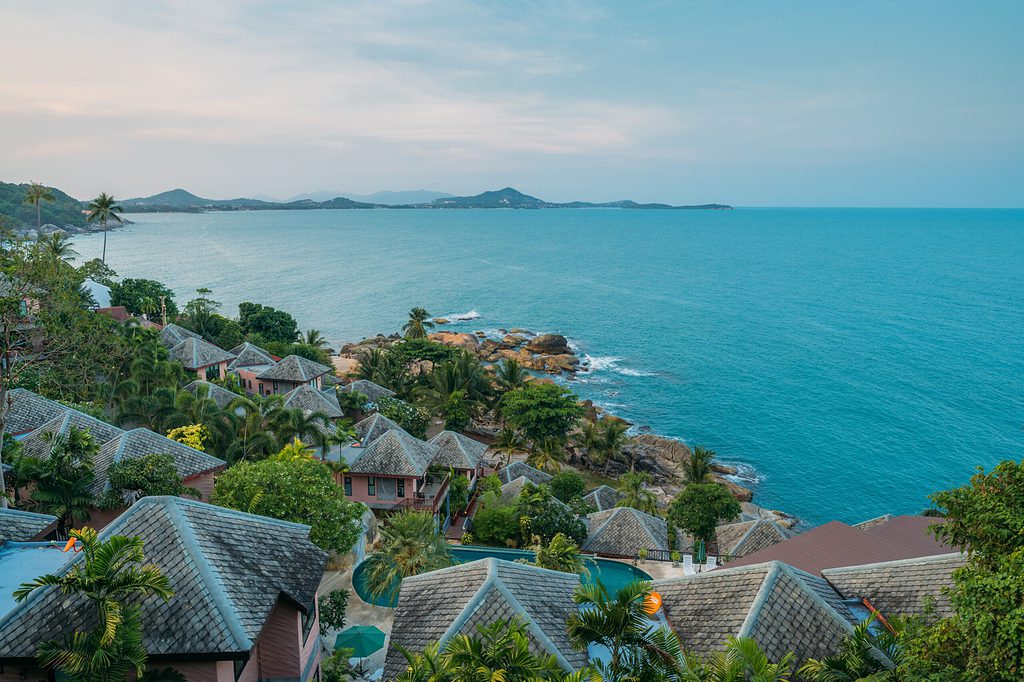
Things to Do in Koh Samui
Have a Beach Day: Koh Samui is known for its beaches, and it’s the main reason many choose to visit; some of the best beaches in Koh Samui are Chaweng, Lamai, Bo Phut, and Lipa Noi Beach.
Island Hopping: With its location in the Gulf of Thailand, there are many other islands nearby, including Koh Phangan, Ko Tao, and Pig Island, to explore.
Day Trip to Ang Marine Park: Ang Thong is one of Thailand’s best national parks; Ang Thong Marine Park is a collection of 42 unique islands to explore. Located not far from Koh Samui, visiting Ang Thong Park is a must when in Koh Samui!
Night Markets: A few notable night markets in Koh Samui are Lamai Night Market, Chaweng Walking Street, and the Night Market Fisherman’s Village.
Explore Fishermen’s Village: The Fishermen’s Village is a picturesque walkable area by Bo Phut Beach; it’s full of boutique shopping, great restaurants, and beach bars with stunning sea views.
TIP: If you visit Koh Samui and want to visit its neighboring island, Koh Pha Ngan, here’s how!
What is the best month to go to Koh Samui?
The best month to visit Koh Samui is February, the driest month on the island.
Humidity levels are very tolerable in February, and rainfall during the month is less likely than in other months.
What is the rainiest month in Koh Samui?
November is the rainiest month on the island. November is the peak rainy season in Koh Samui. It’s advised not to visit Koh Samui during November.
During this month, you can expect constant rainfall throughout many days and thunderstorms, and outdoor activities aren’t possible.
What is the coldest month in Koh Samui?
On average, January is the coldest month on the island. The mean temperature is around 26°C (79°F).
But January has little rainfall. So, January is a great time to visit Koh Samui!
How long does it rain in Koh Samui?
Ultimately, this depends on the month and season of the rainfall, so it’s difficult to say.
Rainfalls during the monsoon months in Koh Samui, from September through December, tend to last longer than rainfalls during other times of the year.
But if rainfall occurs during the drier months from January through April and July through August, the rainfall shouldn’t happen for too long.
Besides the rainy season, Koh Samui has months where the weather is more likely optimal, like February and March. So, if you’d like to visit when it’s least possible to rain, it’s best to visit during these two months!
Happy & Safe Travels
Planning Checklist
- Find the best Hotels/Resorts
- Book a Vacation Home Rental
- Book a fun Tour in the Place you’re visiting
- Find the best Hostels
- Find/Buy the Cheapest Flights
- Get Travel Insurance when traveling
Disclaimer: Please note that some of the links shared in this article might be affiliate links. This means that at no extra cost to you, we will earn a small commission for any sales generated through this article and/or this website.
We recommend products/services we’ve either used or researched thoroughly – Thank you for supporting me so we can continue to share helpful travel content!

